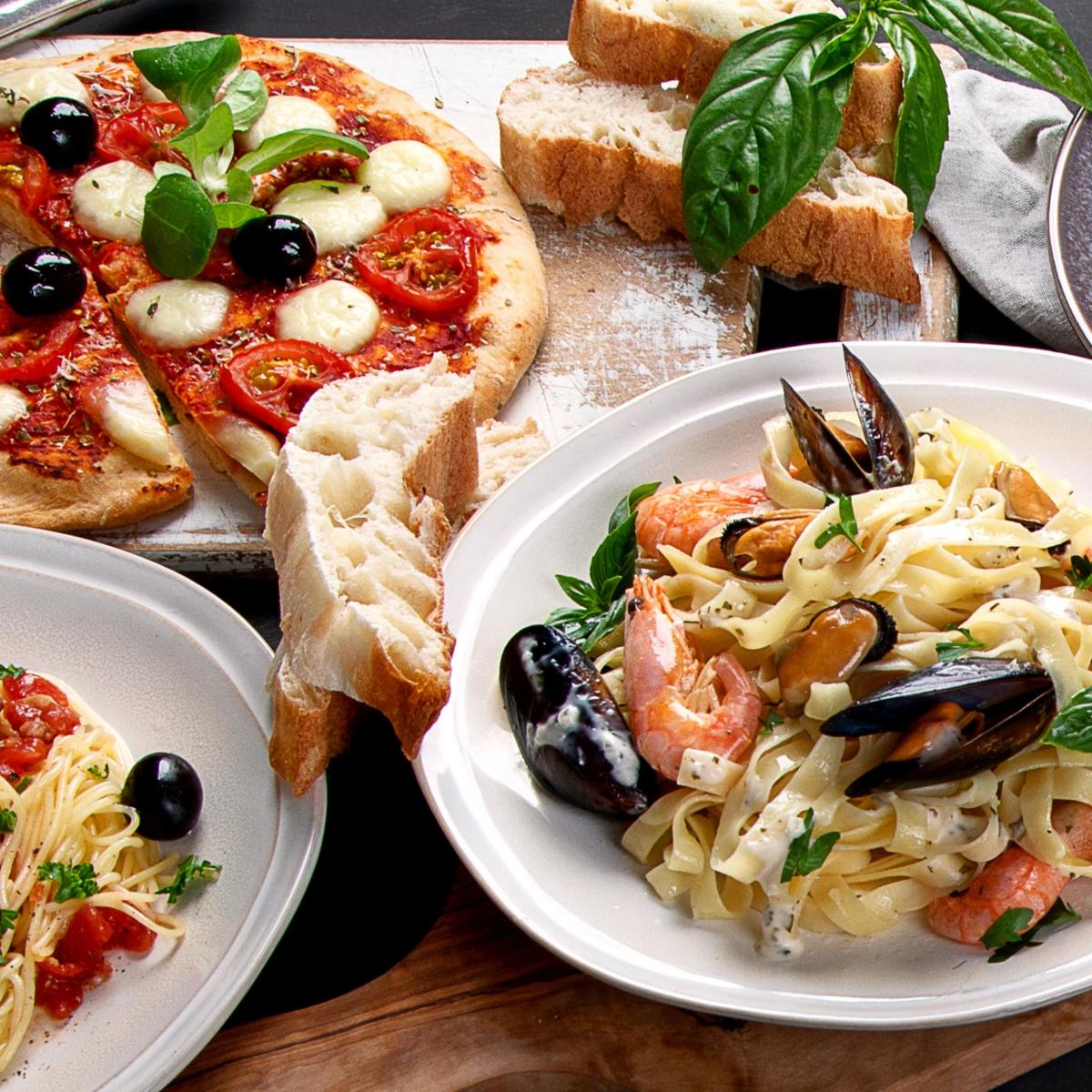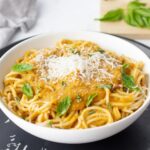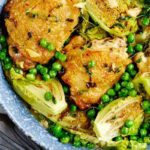Imagine savoring the rich, comforting flavors of classic Italian dishes without the worry of allergens. This guide unveils the secrets to creating delicious and safe meals, transforming beloved recipes like creamy pasta sauces, hearty lasagna, and fragrant risotto into allergen-free culinary delights. We’ll explore simple ingredient swaps that maintain authentic tastes and textures, offering step-by-step instructions and expert tips for navigating the world of allergen-free Italian cooking. Prepare to embark on a culinary journey where tradition meets safety, resulting in dishes that are both satisfying and worry-free.
From understanding common allergens in Italian cuisine—dairy, gluten, nuts, and more—to mastering substitution techniques, this resource provides a comprehensive toolkit. Learn how to source high-quality allergen-free ingredients, avoid cross-contamination, and beautifully present your creations. Each recipe is meticulously detailed, with clear instructions and stunning visual descriptions to guide you every step of the way. Discover the joy of creating delicious, allergen-free Italian food that’s as visually appealing as it is flavorful.
Step-by-Step Recipes for Allergen-Free Italian Dishes

Creating delicious and comforting Italian food without common allergens like gluten, dairy, and nuts requires careful planning and substitution, but the results are well worth the effort. These recipes offer flavorful alternatives that maintain the heart of Italian cuisine while ensuring they’re safe and enjoyable for everyone.
Allergen-Free Creamy Tomato Sauce
This vibrant sauce is the perfect base for many pasta dishes and is naturally dairy-free and nut-free. Its rich texture comes from using blended tomatoes and a touch of nutritional yeast for a cheesy flavor.
This recipe yields approximately 4 cups of sauce.
- Ingredients: 28 oz can crushed tomatoes, 15 oz can tomato sauce, 1 medium onion, finely chopped, 2 cloves garlic, minced, 2 tbsp olive oil, 1 tbsp nutritional yeast, 1 tsp dried oregano, 1 tsp dried basil, ½ tsp salt, ¼ tsp black pepper.
- Instructions:
- Heat olive oil in a large saucepan over medium heat. Add the chopped onion and cook until softened, about 5 minutes.
- Add the minced garlic and cook for another minute until fragrant.
- Stir in the crushed tomatoes, tomato sauce, nutritional yeast, oregano, basil, salt, and pepper.
- Bring the sauce to a simmer, then reduce heat to low and cook for at least 30 minutes, stirring occasionally, allowing the flavors to meld. The longer it simmers, the richer the flavor becomes.
- Taste and adjust seasonings as needed. You may wish to add a pinch of sugar to balance the acidity of the tomatoes.
Gluten-Free Polenta with Roasted Vegetables
This hearty dish showcases the versatility of polenta, a naturally gluten-free grain. The roasted vegetables add a burst of color and flavor, creating a satisfying and nutritious meal.
This recipe serves 2-3 people.
- Ingredients: 1 cup coarse polenta, 4 cups vegetable broth, 1 zucchini, diced, 1 red bell pepper, diced, 1 yellow squash, diced, 1 cup broccoli florets, 2 tbsp olive oil, salt and pepper to taste, fresh herbs (rosemary, thyme) optional.
- Instructions:
- Preheat oven to 400°F (200°C). Toss the diced zucchini, bell pepper, squash, and broccoli florets with 1 tbsp olive oil, salt, and pepper. Spread on a baking sheet and roast for 20-25 minutes, or until tender and slightly caramelized. The vegetables should be slightly browned at the edges for optimal flavor.
- While the vegetables are roasting, bring the vegetable broth to a boil in a medium saucepan. Slowly whisk in the polenta, stirring constantly to prevent lumps. Reduce heat to low and continue stirring for 15-20 minutes, or until the polenta is thick and creamy. The consistency should be smooth and easily pourable.
- Stir in the remaining 1 tbsp olive oil and season with salt and pepper to taste. Add fresh herbs if desired.
- Serve the creamy polenta topped with the roasted vegetables. A drizzle of olive oil adds a finishing touch.
Dairy-Free and Nut-Free Lemon Ricotta Pasta
This vibrant pasta dish uses a dairy-free ricotta alternative made from silken tofu, creating a surprisingly creamy and flavorful sauce. The addition of lemon brightens the dish, providing a refreshing counterpoint to the richness of the sauce.
This recipe serves 2.
- Ingredients: 8 oz gluten-free pasta, 1 block (14 oz) silken tofu, drained, ¼ cup nutritional yeast, 2 tbsp lemon juice, 1 tbsp olive oil, 1 clove garlic, minced, ½ tsp salt, ¼ tsp black pepper, zest of 1 lemon, fresh parsley, chopped (for garnish).
- Instructions:
- Cook the gluten-free pasta according to package directions. While the pasta cooks, prepare the dairy-free ricotta.
- In a food processor or blender, combine the drained silken tofu, nutritional yeast, lemon juice, olive oil, minced garlic, salt, and pepper. Blend until smooth and creamy. The mixture should have a consistency similar to traditional ricotta cheese.
- Stir in the lemon zest.
- Drain the cooked pasta and add it to the bowl with the dairy-free ricotta. Toss gently to coat the pasta evenly.
- Serve immediately, garnished with fresh parsley.
Tips and Tricks for Allergen-Free Italian Cooking
Creating delicious and authentic Italian food without common allergens requires careful planning and execution. This section provides practical advice to navigate the challenges of allergen-free Italian cooking, ensuring both safety and flavour. We’ll cover essential techniques for preventing cross-contamination, adapting classic recipes, and properly storing your allergen-free creations.
Avoiding Cross-Contamination
Preventing cross-contamination is paramount in allergen-free cooking. Imagine a vibrant kitchen, bustling with activity, but meticulously organized to prevent allergens from inadvertently mixing with your dishes. This involves dedicating separate utensils, cutting boards, and cooking surfaces for allergen-free preparations. Visualize a brightly colored, allergen-free zone in your kitchen, clearly distinct from areas used for foods containing common allergens like wheat, dairy, or nuts. Thoroughly washing all equipment with hot, soapy water between uses is crucial. Even a tiny trace of allergen can trigger a reaction. For instance, using a cutting board previously used for nuts to prepare a gluten-free pesto could contaminate the pesto, rendering it unsafe for those with nut allergies. Dedicated equipment ensures a safe and enjoyable cooking experience for everyone.
Adapting Italian Recipes
Adapting traditional Italian recipes to be allergen-free often involves substituting ingredients. Consider the classic creamy carbonara. Instead of using eggs and cream, a rich and flavorful sauce can be achieved using a blend of nutritional yeast for a cheesy flavor, vegetable broth for creaminess, and a touch of olive oil. This creates a satisfyingly creamy texture and a deep, umami flavor that rivals the traditional version. Similarly, gluten-free pasta is readily available, offering a delightful alternative to traditional wheat pasta, ensuring your pasta dishes remain enjoyable for those with gluten sensitivities. The key is to experiment with substitutes that provide similar textures and flavors, maintaining the integrity of the dish.
Proper Labeling and Storage
Clear and accurate labeling is essential for allergen-free dishes. Imagine a neatly organized pantry, each container clearly labeled with its contents and allergen information. This minimizes the risk of accidental consumption of allergens. Use clear, permanent markers to label containers with the dish’s name, ingredients, and any potential allergens that may be present (even trace amounts). This allows for easy identification and prevents accidental consumption. For instance, a jar of gluten-free pesto should clearly state “Gluten-Free Pesto – Contains Olive Oil, Basil, Pine Nuts (May contain traces of nuts).” Proper storage is also crucial; airtight containers prevent contamination and maintain freshness. Refrigerate or freeze dishes as appropriate to ensure optimal quality and safety.
Visual Representation of Allergen-Free Italian Dishes
The visual appeal of food is paramount; it’s the first impression that captivates and whets the appetite. For allergen-free Italian cooking, maintaining this visual allure is crucial, ensuring the dishes remain enticing and celebratory, not a compromise. A vibrant presentation transforms a simple meal into a memorable experience.
The following descriptions illustrate how carefully considered color palettes, textures, and plating techniques can elevate allergen-free Italian dishes, creating a feast for the eyes as well as the palate. This enhances the overall dining experience by stimulating the senses and fostering a sense of occasion, making even everyday meals feel special.
Allergen-Free Gluten-Free Pasta Primavera
Imagine a vibrant swirl of spring colors on a plate. Delicate, bright green asparagus spears, tender yellow zucchini ribbons, and ruby-red cherry tomatoes are artfully arranged around a nest of creamy, golden-yellow gluten-free pasta. The pasta, subtly glistening with a light olive oil dressing, contrasts beautifully with the fresh vegetables. A sprinkle of finely grated Parmesan cheese (ensure it’s allergen-free!), adding small white flecks, completes the picture. The overall effect is one of lightness and freshness, reflecting the seasonality and healthy nature of the dish. Plating on a white rectangular plate allows the colors to pop, while a rustic, wooden plate provides a warmer, more homely feel.
Allergen-Free Creamy Tomato and Spinach Risotto
This risotto presents a study in textures and earthy tones. The creamy, pale-orange risotto base provides a smooth, almost silken backdrop for the vibrant green spinach leaves, which are delicately folded into the rice. Small, glistening droplets of olive oil on the surface add a touch of elegance. A scattering of finely chopped fresh basil, with its deep green hue, provides a contrasting texture and aromatic visual element. The overall impression is one of richness and comforting warmth, reflecting the hearty nature of the dish. A shallow, wide bowl accentuates the creamy texture and allows the colors to blend harmoniously.
Allergen-Free Eggplant Parmesan
This dish is a symphony of textures and deep, rich colors. Slices of deep purple eggplant, lightly browned and glistening with olive oil, are layered with a vibrant red tomato sauce. The golden-brown, crispy coating of the breaded eggplant, made with allergen-free breadcrumbs, offers a textural contrast to the soft eggplant and smooth sauce. A generous sprinkling of melted, golden-yellow allergen-free mozzarella cheese adds a final touch of creamy richness. The dish is presented in a rustic, shallow baking dish, allowing the layers to be visible, showcasing the beautiful color gradation and textural interplay. A garnish of fresh basil adds a final touch of green, breaking up the warm tones.
Step-by-Step Visual Guide: Allergen-Free Gluten-Free Pasta Primavera
The preparation of this dish unfolds in a series of visually distinct stages.
First, a vibrant array of fresh spring vegetables—asparagus, zucchini, and cherry tomatoes—is meticulously washed and prepared. The asparagus is snapped into bite-sized pieces, the zucchini is thinly sliced into ribbons using a vegetable peeler, and the cherry tomatoes are halved.
Next, a pot of salted water is brought to a rolling boil. The gluten-free pasta is added and cooked according to package directions, transforming from dry, pale yellow strands into plump, golden-yellow noodles.
While the pasta cooks, the prepared vegetables are lightly sautéed in olive oil until tender-crisp, their colors intensifying as they cook. The vegetables retain their bright hues, showcasing their freshness.
Finally, the perfectly cooked pasta is drained and gently tossed with the sautéed vegetables and a light olive oil dressing. The combined colors create a vibrant, harmonious palette. The dish is plated, creating an artful arrangement of colors and textures, ready to be enjoyed.
Creating allergen-free Italian comfort food doesn’t mean sacrificing flavor or tradition. This guide has equipped you with the knowledge and techniques to confidently prepare delicious and safe meals for yourself and your loved ones. By understanding ingredient substitutions, mastering safe cooking practices, and embracing creative plating, you can transform classic Italian dishes into culinary masterpieces that are both beautiful and allergy-friendly. Enjoy the journey of exploring the vibrant world of allergen-free Italian cooking, where tradition and safety beautifully intertwine.
Popular Questions
Can I freeze allergen-free Italian dishes?
Yes, many allergen-free Italian dishes freeze well. Properly label and store them in airtight containers for optimal quality.
How long do allergen-free ingredients last?
Check the expiration dates on all your ingredients. Proper storage is crucial for maintaining freshness and safety.
What are some good resources for finding allergen-free ingredients?
Specialty health food stores, online retailers, and some larger supermarkets carry a wide range of allergen-free products.
Are there any potential nutritional differences between traditional and allergen-free Italian dishes?
Nutritional content can vary depending on the substitutions used. Using nutritious alternatives can help maintain or even improve the nutritional profile.


:max_bytes(150000):strip_icc()/faw-meal-kits-test-green-chef-wdickey-154-256f6c93a4d341d3a6e46e34d09b22d2.jpeg)